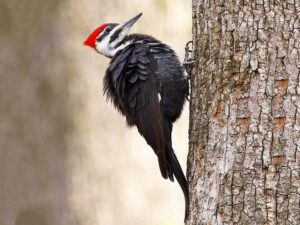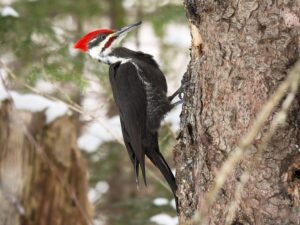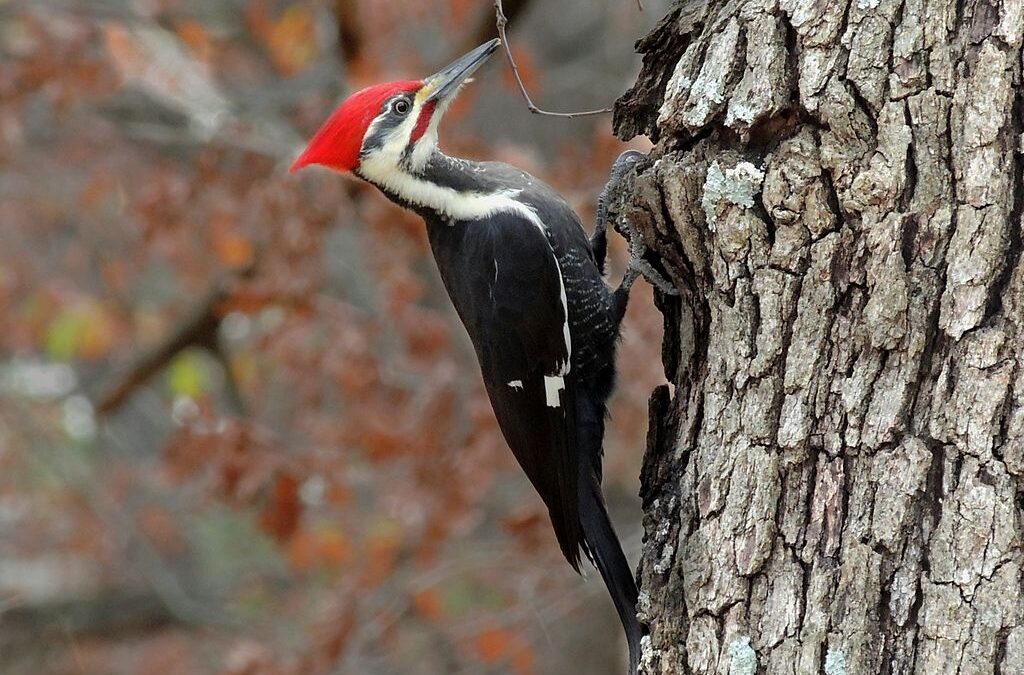In mid winter, with the foliage from the beech, oak, maple and other deciduous trees gone, a wintering bird in Michigan can be more easily seen; The Pileated Woodpecker (Dryocopus pileatus). Easily recognized by it’s black body, white stripes down the neck and most notably, its fiery red crest, this woodpecker is one of the largest woodpecker in the world. Generally the size of a crow, they have a 30 inch wingspan and have been measured at 15.7 to 19.3 inches long.
Signs of these birds in the Michigan forests are all around. Pileated woodpeckers feed mostly on Carpenter ants and can be seen and heard whacking at dead trees and fallen logs in search of prey. The result are unique rectangular holes left in the wood. These holes actually serve as shelter for other animals such as screech owls, chickadees, wood ducks and bats. Take a walk through any Michigan forest and you’ll more than likely notice these distinctive holes. Look for Pileated Woodpeckers in stands of mature forest with plenty of dead trees and downed logs—deep excavations into rotten wood are telltale signs of this species. Dead or dying trees (snags) on your property may attract the bird and they have been known to visit bird feeders.
Pileated woodpeckers are common in Michigan and Sleeping Bear Dunes and with a little work, it’s not difficult to distinguish between male and female birds. While both sexes appear very similar from a distance, a key distinction is the red streak along the cheek of the male. Females have a gray-black forecrown, a flame-red crest, but lack the red streak along the cheek that the males possess.

A female Pileated Woodpecker
Gray-black forecrown
No red streak on the cheek

A Male Pileated Woodpecker
Red crown continues into start of beak
Red streak on the cheek
Grab some good binoculars or a birding scope and you’ll be identifying these birds quickly.


I value the information on your internet site. Thanks a lot!